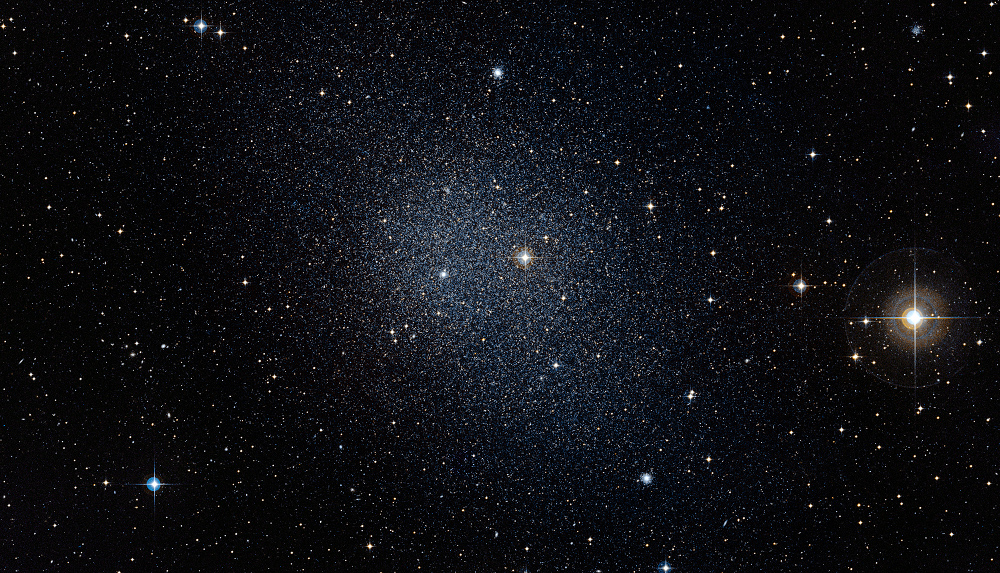
 Credit: ESO/Digital Sky Survey 2
Credit: ESO/Digital Sky Survey 2
What is the Matter?
The Universe teaches us that what we don't see can be as important as what we do see. We know from studies of the rotation of the Milky Way and other galaxies, and from the bending of light by gravity, that most of the gravitating matter that holds galaxies and clusters of galaxies together is invisible to us. It possesses mass, but generates no detectable electromagnetic radiation. Surprisingly, there's five times more of this dark material in the Universe than the normal atomic matter we're used to. What could this stuff be? The current best guess are weird sub-atomic particles called weakly interacting massive particles, or WIMPS. But because these particles don't readily interact with normal matter, they are extremely difficult to detect. Models predict, however, that in large associations of WIMPS, there's a substantial probability that a WIMP will encounter its anti-particle and annihilate. This WIMP-anti-WIMP encounter should produce detectable radiation by the conversion of WIMP mass to energy, and astrophysicists believe this radiation should be in the Gamma-ray energy band. Now, using the Large Area Telescope on the Fermi Gamma-ray Space Telescope, astronomers have looked for the characteristic wimp annihilation radiation. Astronomers have used two years of LAT observations of dwarf elliptical galaxies (like the Fornax dwarf elliptical, pictured above) which are known to possess few stars but large amounts of dark matter. Using a sophisticated analysis technique, these LAT data were probed for any significant signal from dark matter annihilation. None was found. This non-detection is important, as it provides a strong constraint on the possible WIMP mass range, and on the way they must interact.
Published: April 9, 2012
<
HEA Dictionary ● Archive
● Search HEAPOW
● Other Languages
● HEAPOW on Facebook
● Download all Images
● Education ● HEAD
>

Each week the HEASARC
brings you new, exciting and beautiful images from X-ray and Gamma ray
astronomy. Check back each week and be sure to check out the HEAPOW archive!
Page Author: Dr. Michael F. Corcoran
Last modified Tuesday, 27-Feb-2024 10:06:37 EST


